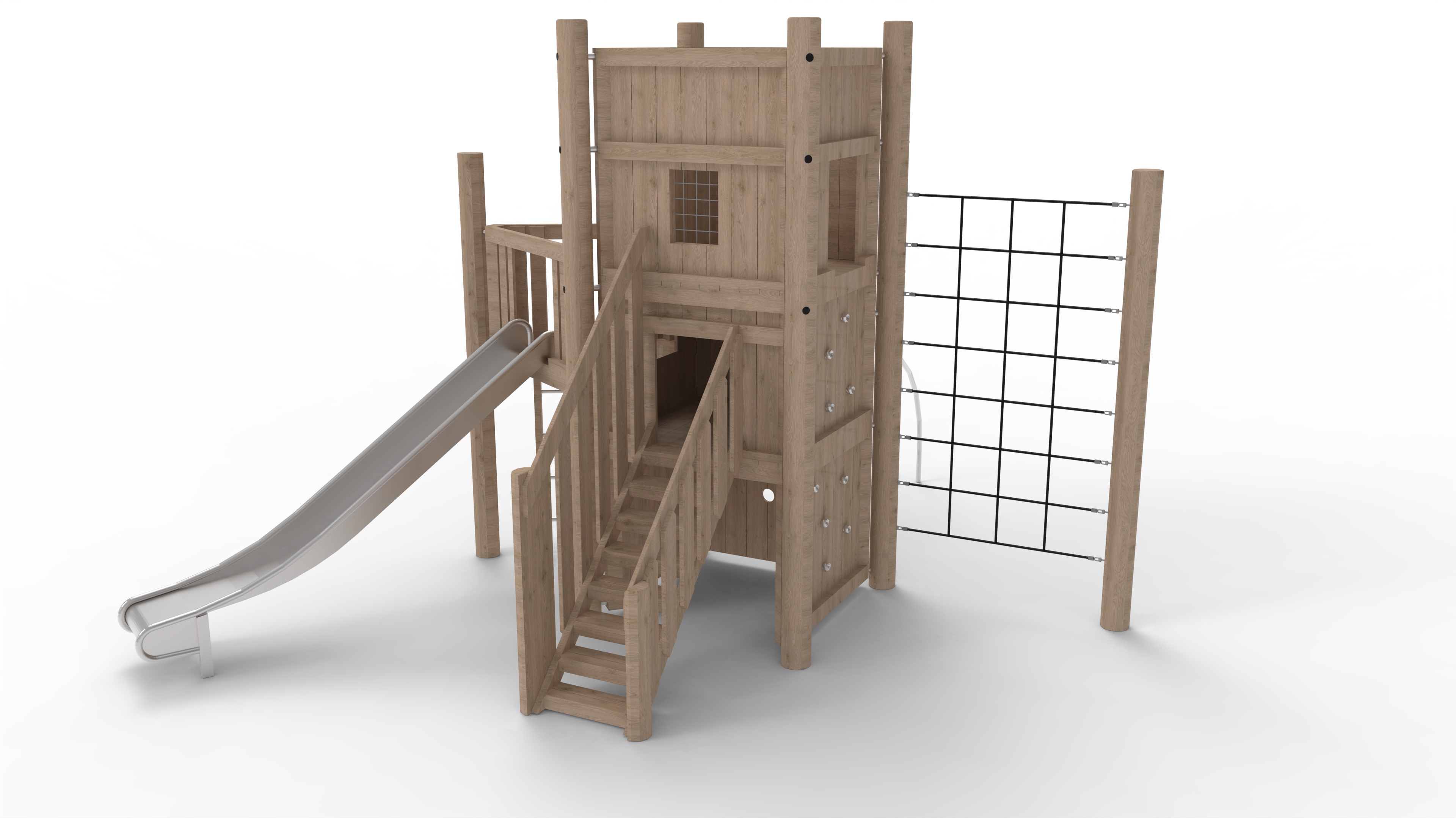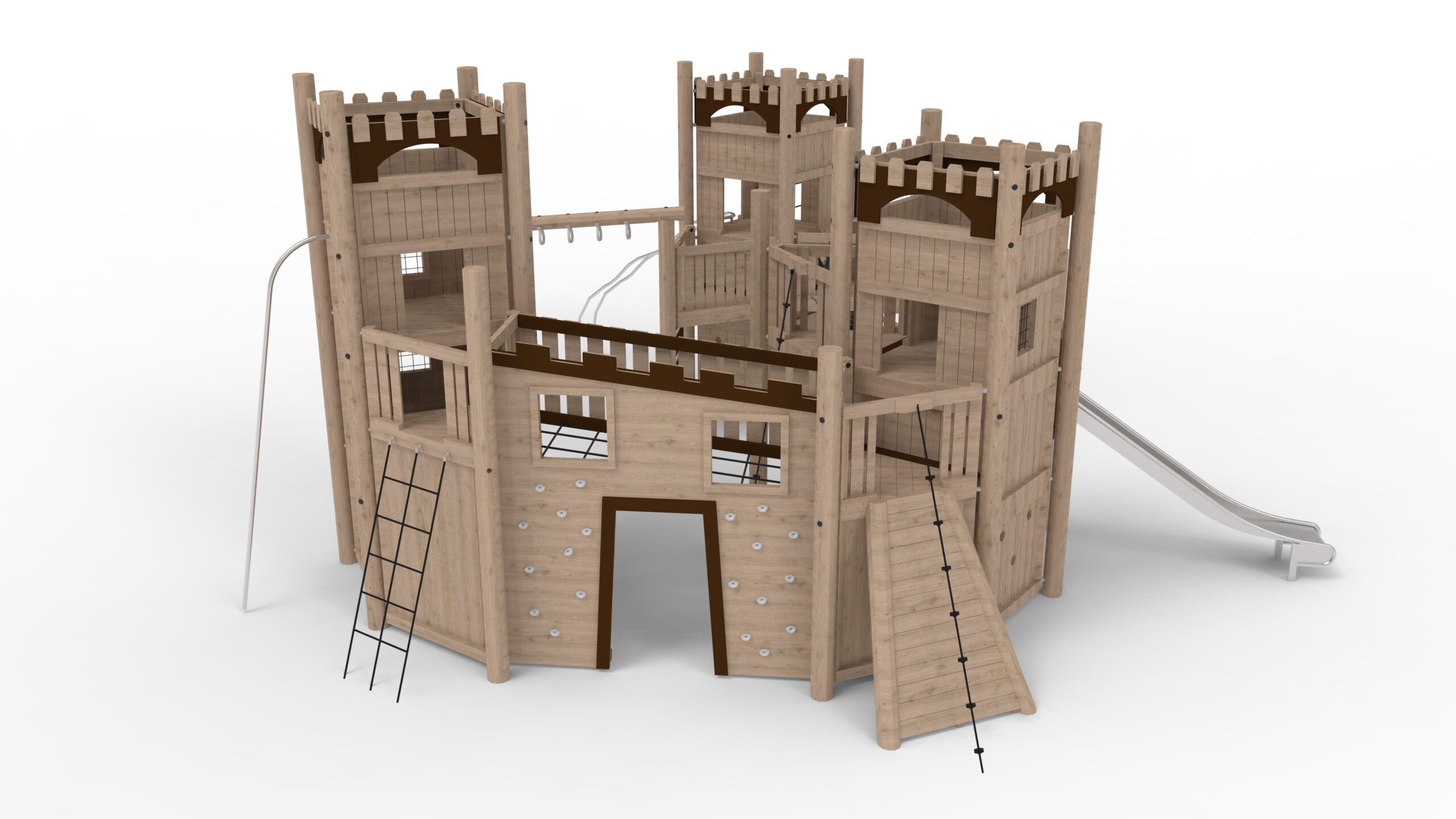Inclusive play
Inclusive play design should focus on the inclusion and development of both disabled and non-disabled children.







































































What is inclusive play?
Inclusive play is the terminology used when referring to play activities that offer experiences for both disabled and non-disabled children. For projects such as parks and playgrounds, this means that the site should include equipment that enables children of differing abilities to experience and interact with the features of the area and one another. For a site to be considered inclusive play friendly, it must offer equipment that meets the needs of all types of visitors, regardless of whether they have a disability.

Benefits of inclusive play
Outdoor play opportunities provide the perfect environment for the physical, social and emotional development of young people. However, not all play areas offer the equipment that allows disabled children to benefit from the same experience. Inclusive play areas bridge the gap between exclusion and inclusion for disabled children, giving them an equal opportunity to experience and learn from activities. An inclusive play area mustn't entirely focus on equipment for disabled children as there should be provisions for everyone.
Inclusive play is not solely beneficial for disabled children through the opportunities it presents them to develop. It also helps to instil children at an early age with a positive attitude towards people with disability. Given that the play takes place in a social setting, it gives all children the chance to learn from one another and promote 'inclusion culture'.
Given that 1 in 20 under 16-year-olds has a disability within the UK, the need for inclusive play areas is already apparent, especially when considering that over 50% of disabled children are excluded from play opportunities. The positive effect of inclusive play is beneficial for both disabled and non-disabled children, particularly given the social integration. Around half of all disabled children have been classified with autism. This can have some real-life implications on their ability to socially interact with others, communicate their emotions and develop new behaviours. Inclusive play is fantastic at helping to combat some of these symptoms by providing children with a safe area for them to develop these skills with other disabled and non-disabled children.
Inclusive play design
An inclusive play area should be designed to provoke the physical and sensory development of children in an inclusive setting. Developing children learn through their senses of smell, touch, taste, vision and hearing. A playground without inclusive facilities may not provide disabled children with the opportunity to experience this type of play. For every inclusive play project, we build this into our design, and we'll advise you how to achieve an inclusive play facility.
Children must be given the freedom to explore and interact in a way that seems natural to them. We build a sense of progression and layout flow within our inclusive play areas to support this type of self-learning. Whether it be through a piece of equipment that connects children from one area to another ,or simply a bridge or path, there are many ways to create a sense of space to explore.
Inclusive play parks and playgrounds should also serve as community areas, and they may often be the destination of school or group trips. Resting or social seating areas are a simple yet effective addition that acts as a resting area for tired children and space for parents to meet and socialise. Relaxation is a key part to all playtime activities, and having a resting area may also be a necessity for the administration of medicine.
Inclusive play design also needs to bear in mind features for accessibility, such as pathways, fencing and gating. Pathing needs to be durable and easy to manoeuvre with the addition of ramps to allow for easy access. Our designs also consider that children should have no difficulty when entering or leaving the area, giving them the ability to explore on their own accord.
Children should take risks and learn from them, be able to get creative with equipment available and discover new things for themselves. This can be difficult if you have a disabled child without access to a facility that has been designed for inclusive play, or one that does not offer the correct equipment and considerations for the social aspect. Our inclusive play facilities are designed with all of these things in mind, ensuring that the project is successful at attracting and encouraging interactive play among visitors.
Inclusive play equipment
Our play and sports equipment is high-quality, built to last and safe for children's play, but it also offers much more. The equipment we install within inclusive play areas supports the development of cognitive abilities and helps towards creating an area that encourages social interaction and community play.
Play is fantastic for the development of many mental and physical skills. However, when children are not given opportunities in this environment, it can have a negative effect on their progress. For example, their ability to concentrate, willingness to engage in communal activities and poor social skills can result from lack of social play. Every great inclusive play design will feature the equipment that helps to promote all of these things. We take careful consideration for the equipment included in the design, ensuring your inclusive play area is an effective community addition.
What we consider for inclusive play equipment:
Texture
Textured equipment supports the development of touch feelings. A variety or surface finishes will encourage children to get hands-on.
Visual
Visual by design, our inclusive play areas are visually appealing and utilise both high-quality equipment and the natural surroundings. This creates an area that attracts the visual attention of children, encouraging them to explore.
Puzzle-solving
We offer equipment that requires children's interaction to bring them to life. This type of equipment requires that children get familiar with the way it works and practice their puzzle-solving skills.
Communication
The social aspect of an inclusive play area is vital in breaking down the barriers between disabled and non-disabled children. Practising communication in a relaxed play setting can also help develop the confidence of children.
Risk
One of the first experiences of risk children will have is during play activities. They offer the opportunity to assess and calculate risks and make a decision based on their ability to process the situation. This helps them to learn and develop their internal ability to judge risks and act accordingly.
Multi-person activities
Some equipment, such as a see-saw, require multiple participants to get involved. By allowing children to seek out a play-buddy and learn how to play with others can be a fantastic way to hone their community skills.
Motor skills
Both gross and fine motor skills (that being actions that require arm, leg, wrist, hands, fingers, feet and toe movement) can grow from inclusive play activities. Including a range of equipment types into the design enables children to practice their motor skills in varying ways across all of the equipment on offer.
Exploration
Providing children with the means to explore in a safe setting helps to promote self-confidence. Through exploration, they're given a chance to come across social and physical situations and use their creative mind to aid play.
Health and safety
Concerns for the health and safety of disabled children can be at the forefront of parents minds when looking for play opportunities. This factor alone can restrict the chance a child has to experience such play activities. We carry out extensive risk assessments and only install high-quality equipment to our inclusive play facilities, helping parents to feel comfortable and confident when bringing their child to the area.
Inclusive play refurbishment
If you already have a facility that is either in need of refurbishment, or you’re looking to adapt your current park or playground so that it is suitable for inclusive play, we also offer both of these services. We can completely deconstruct a site ready for new equipment, resurface and update the equipment of an existing site, or expand and replace elements of your current solution with new inclusive installations.


Are you looking for an inclusive play design and installation service?
We would love to hear your plans and learn more about how we can help fulfil your inclusive play requirements.
Inclusive Play Equipment
Here are some examples of our equipment for inclusive play.
.svg)

















